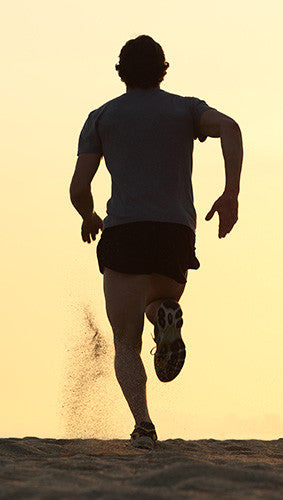The low-down on low-carb:
How to do it right

It’s almost as hot a topic as the chicken and egg debate: is low-carb or low-fat the healthier diet for you?
We’ve been taught to fear the fat from the early 1980s on and supermarkets were flooded with low-fat (and sugar-pumped) products.
But scientists started to review their theories around fat and new studies emerged that showed that healthy fats might not be your enemy – and could actually be your body’s best friend.
The low-carb diet, also known as the ketogenic or ‘low-carb, high-fat’ (LCHF) diet, is all about saying goodbye to carbohydrates – such as bread and pasta or sugary foods – and instead fuelling your body with foods that aren’t as heavily processed, including natural fats, vegetables and protein.
A high-fat diet used to seem counterintuitive to people who wanted a lean, healthy body (even if it doesn’t exactly mean eating Ho Hos for breakfast). But as new evidence emerged about the pros of ketogenic diet, fat started to lose its reputation as the body’s bad guy and the trend for LCHF took off. Soon, every athlete, celebrity and fitness enthusiast was spreading the love for avocados, eggs and coconut oil.
Ketogenic and LCHF might be new buzz words, but the idea of eating healthy fats to get lean has been around for almost 100 years. The basic idea behind LCHF is that you get a full 80 percent of your calories from fats, 15 percent from protein, and only 5 from carbs — a ratio proven by science to be effective when it comes to weight loss.
It’s a basic philosophy that’s been adapted and transformed into new diets (hello Dr Atkins), but the core principle remains the same – more fat, fewer carbs. And yes, that means exactly what you’re thinking: lots of avocados.
But how does it work? It’s all to do with how the body understands and uses energy. Almost every cell in our bodies has two options to burn fuels: one is glucose (made from sugar) and the other one is ketones (made from fat).
When you’re following the ketogenic diet, your body burns ketones (fat) as its primary fuel source – this is known as ‘ketosis’. So rather than burning off that starchy bagel you used to have for breakfast, you start shredding your body’s fat supplies.
There’s also the added win that when you avoid carbohydrates – i.e. sugar and starches – your blood sugar stabilizes, those spikes caused by sugary foods go away and the levels of the fat-storing hormone insulin also drop. That means a boost to fat-burning, fewer food cravings and a leaner, more energised body.
It’s not just about fitting into your jeans though – LCHF could actually boost your athletic performance too. In a recent review published in the European Journal of Sport Science, researchers showed that even elite endurance athletes – who are not usually focused on weight loss – may perform better, burn more fat and recover faster when following a LCHF diet compared to high-carb one.
This is all down to ketosis again – when the body starts to fuel itself with fat and doesn’t rely on a constant supply of carbs for energy. When your body is in ketosis, you're less likely to experience the sudden slow-down that happens when your body has depleted its supply of muscle glycogen – usually about an hour into your workout.
It’s no surprise that some of the biggest names in sport embrace a LCHF diet. Basketballer James LeBron ditched carbs, and downhill skier Lindsey Vonn is low-carb all the way.
Low-effort low carb
So you’ve got the skinny on fat. But what should you eat and what you should ditch? We’ve put together our LCHF favourites (and LCHF foes) that make prepping healthy, keto-friendly meals a breeze.



• Meat, fish & eggs: Think almost every type of fresh meat and fish including beef, chicken, lamb, pork, salmon, tuna, etc. Eat grass-fed and/or organic meat and wild-caught fish whenever possible. As many eggs as you like are allowed, preferably organic from free-range chickens.
• Vegetables (growing above the ground): Eat plenty of non-starchy veggies including asparagus, mushrooms, broccoli, cucumber, lettuce, onions, peppers, cauliflower, tomatoes, garlic, brussel sprouts and zucchini.
• Dairy: Full-fat dairy like sour cream, heavy (whipping) cream, butter, cheeses and unsweetened yogurt are all LCHF. If you’re moo-free, then unsweetened almond milk and coconut milk are both good milk substitutes. Stay away from regular milk, skim milk and sweetened yogurts – chances are high they contain a lot of sugar. And avoid all fat-free and low-fat dairy products.
• Oils and fats: Olive oil, avocado oil, coconut oil, butter and even bacon fat are great for cooking and consuming.
• Fruits: Berries like strawberries, blueberries, raspberries, etc. are allowed in small amounts. Avocados are great because they’re low carb and very high in fat.
• Miscellaneous: think water, coffee, and unsweetened tea. If you can’t do coffee without sugar, then consider using Stevia and erythritol (sweeteners). Condiments like mayonnaise, mustard, pesto, and sriracha. Broths (beef, chicken, bone). Pickles and other fermented foods. Seeds and nuts (chia seeds, flaxseeds, pecans, almonds, walnuts, macadamias, etc.)
Say goodbye to….
- Grains and starches: avoid cereal, pasta, bread, rice, potatoes, corn, oats, quinoa, flour, bagels, rolls, croissants or wraps.
- Sugary foods: forget all refined sugar, fruit juices, desserts, fountain drinks, milk chocolate, pastries, candy bars, etc.
- Legumes: beans, peas, and lentils are all high-carb. Give them a miss.
- Vegetable & seed oils: Stop using any vegetable oils and seed oils like sunflower, safflower, soybean, canola, corn and grapeseed oil. Also get rid of trans fats like margarine.
How low should you go?

You know the good guys and the bad guys when it comes to LCHF. But what else should you be doing? It’s pretty straightforward. The general advice is to eat when you’re hungry and until you’re satisfied – this is definitely not about starving your body. And the best news about low-carb diet is that there is no need to count calories or even weigh your food.
If you really want to supercharge your body-fat loss or you have a condition such as Type 2 diabetes that means you need to, then you could get serious – eating under 20grams carbohydrates/day is considered a strict LCHF diet.
But if you don’t want or need to significantly reduce your body fat percentage, then you can take it easier and adopt a more ‘liberal’ LCHF diet.
Here’s what LCHF looks like on a plate – from strict to moderate to liberal. Pick the level that meets your needs.

Source: DietDoctor (https://www.dietdoctor.com/low-carb)
When to say no to low
As with every food approach, there are some people that the keto diet is just not right for. If you’re on medication for diabetes (such as insulin) or high blood pressure, or if you’re breastfeeding then check with your GP about whether a LCHF approach is right for you – they’ll advise you on how to adapt your diet. And for anyone, a diet high in fat and very low in carbs could lead to a dip in nutrient-rich vegetables, fruits and whole grains so LCHF isn’t health’s magic bullet.
Ultimately, it’s about what’s right and realistic for you. And choosing food that makes you feel good and helps your body perform at its best – LCHF or not.


Sources:
https://www.dietdoctor.com/low-carb
https://www.tasteaholics.com/the-complete-keto-diet-guide-for-beginners/





